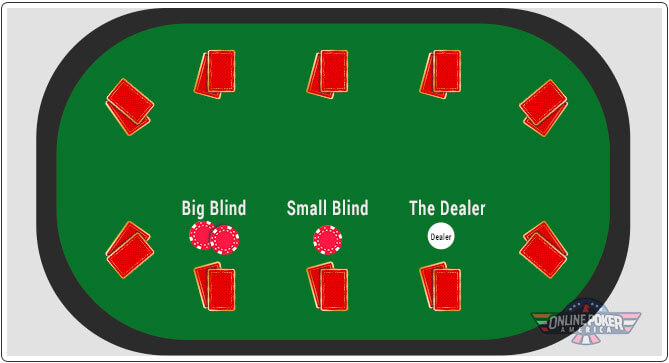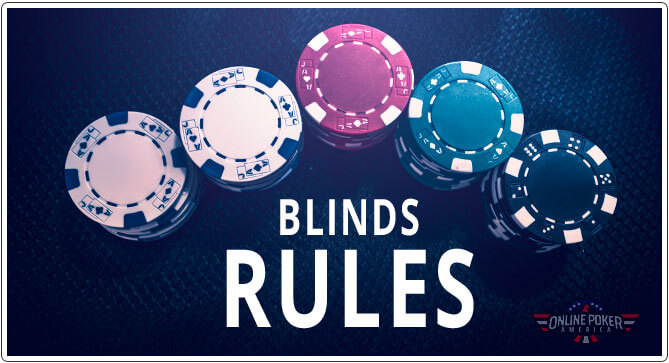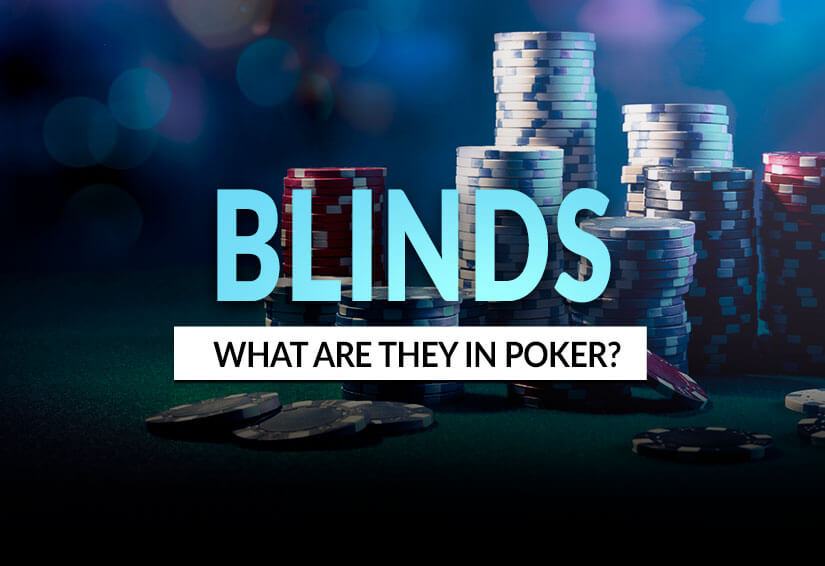Blinds are a vital component of many poker games and having the right knowledge about them plays a huge role in the overall gaming experience. But what exactly is a blind? Let’s break it all down here.
A blind is simply a compulsory or forced bet that is made before any of the cards in a poker game are dealt. That is where they derive their name from – players have to pay them blindly without seeing their cards.
There is a lot more that you need to know about blinds but this is definitely a great start. You are now aware that this is a mandatory bet to be placed when joining a poker game. It can be easily be described as the fee or cost of participation in the game.

What’s the Point of Blinds in Poker?
It is safe to say that a poker game cannot begin without blinds. They are in essence what ignite the game by giving the players the incentive to play. Moreover, they are responsible for generating the action in a game.
Once the game kicks off, the main aim during the first betting round is to “try to steal the blinds“. If the player makes a raise during this first betting round and all the other players fold, the player who raised wins the blinds.
Without this type of bet, the game of poker would be very boring and dull since no one would be under pressure to act with their weaker hands. Needless to say, poker is not poker without all of the mind-boggling action that it is associated with.

The Types of Blinds
Now, once you have contributed your mandatory share in a poker game you will be in the blind. What next? Well, your next move will be dependent on the kind of blind that you will be in. We are going to take a look at the two common types of blinds that are likely to be a part of the poker game that you will be participating in.
Small Blind

In some poker games, this simply means the compulsory bet for the player sitting left of the dealer. This is often regarded as the worst position on the table. This is because the small blind usually acts first which puts that player at a disadvantage.
Being in the small blind means that you are in a rather unique situation. Half of your bet will already be in the pot. The implication here is that you are allowed to see the flop in an unraised pot for a discounted price so long as you have the combination of certain poker hands and one of the following from the small blind:
- Queen Ten
- Jack Ten
- King 8s
- King 7s
- King 6s
- King 5s
- King 4s
- King 3s
- King 2s
Keeping all this in mind, it is recommended that you should never call the half bet in the small hand when you do not have a good starting hand. The small blind, during the player’s turn in the preflop, can fold, raise or call. It is thus not mandatory that it calls the big blind.
The size of the small blind is usually tied to the size of the bet. It is always equal to the size of the small bet. For instance, in some poker games where the big blind is $3, the small blind can either be $1 or $2.
The Big Blind

Unlike the small blind, the big blind is placed in the middle of the poker table. Moreover, while not as bad of a position as the small blind, the big blind is not necessarily a good position. However, it is definitely much better than the small blind though.
Being in the big blind means that you will have the opportunity to check and see the flop for free. You will certainly be at an advantage especially if you are not holding any of the hands that apply to the small hand. Even so, to be safe, you will need to raise some hands in the big blind – this is not mandatory but it helps in cementing your win.
In most online poker rooms, the standard buy-in for some poker variants is placed about 100 big blinds which typically translates to $1,000 in a $5-$10 poker game, for instance. This is often the maximum that is allowed for that game.
The Rules for Using Blinds

Naturally, the use of blinds in the game of poker is governed by a set of rules. These rules are pretty simple and straightforward making easy for everyone to understand. We have broken them down in a manner that is as simple as possible.
The very first rule you will need to know is that for every round in a poker game, every player must get an opportunity to be in the dealers position.
In addition to that, each and every player at the poker table will be required to meet the total amount of the blind obligations. This is just further affirmation that the blind bet is indeed mandatory. For heads-up play where there are only two blinds, the player who is the small blind is also the dealer.
Next, the player who posts a blind will have the choice of raising the pot at the first turn to act. It is worth noting that this does not apply to games where there are “Dead” blinds – these kinds of games use dead chips which are not a part of a player’s bets.
In cases where a new player wants to join the poker action, there is a set of rules to be followed.
The new player can either wait for the big blind or post an amount that is, at least, equal to the big blind after which they will be dealt a hand.
Furthermore, the new player cannot be dealt any cards in between the dealer and the big blind. The new player will, therefore, need to wait until the blind passes.
In summary
- Small blinds is the ‘fee’ or ‘compulsory bet’ for the first player left of the dealer.
- Big blinds are placed in the middle of the table, this is collected from the second player left of the dealer.
- Once a blind is paid players are dealt cards.
- Paying blinds puts players at a disadvantage for that hand.
- Blinds players are betting without seeing their hand, where as all other players are able to.
- These players can act first in each poker round of betting, expect for the pre-flop.







